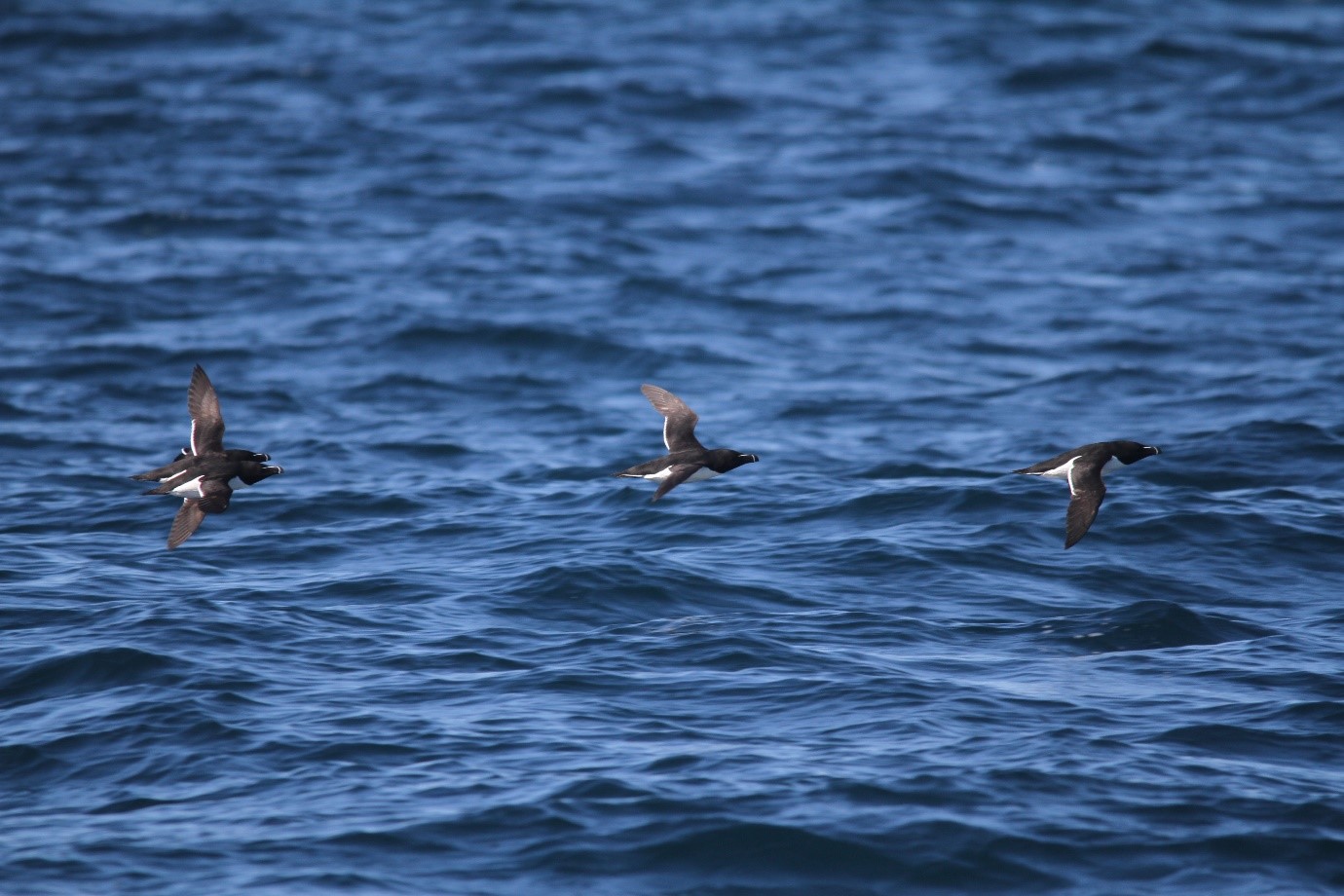Survey Summary: Joint Warrior
One of the many military vessels spotted during the Joint Warrior survey.
Joint Warrior, a UK led NATO military exercise, came to an end off the west coast of Scotland last week. This biannual exercise normally takes place for two weeks each spring and autumn, and is the largest multi-ship, multi-threat exercise conducted by the Royal Navy in UK waters.
Military sonar used during these operations produces an intense loud noise that can disturb and harm cetaceans. At HWDT, we believe that it is important to monitor cetacean presence and behaviour during these exercises. We have been running monitoring surveys to coincide with the Joint Warrior exercises since 2009, collecting acoustic and visual data to help understand the impact that these activities may have on cetaceans across the Hebrides.
Our spring Joint Warrior survey took place from April 24th to May 2nd, during which Silurian covered 318 nm recording over 41 hours of acoustic data.
Silurian's survey route for the Joint Warrior monitoring expedition.
Thirty-five recordings of military sonar were made, 13 of which were categorised to our highest rating meaning the sound was loud enough to mask all other oceanic noise. One of our citizen scientists described it as “the worst sound I have ever heard”.
During the nine day survey, there were 43 marine mammal sightings of 50 individuals from five different species, including grey and common seals, harbour porpoise, Risso’s dolphins and on the last day an amazing minke whale!
We had to wait until the end of the survey for a minke whale sighting, but what a fantastic sighting it was when one finally did pop up!
It wasn’t just cetaceans that put on a show, we also had some fantastic sightings of seabirds and enjoyed many sightings of puffins, fulmars and shearwaters. The stars of the survey were the razorbills though, with an incredible 1,073 individuals recorded in a single day. Common guillemots came in a close second with 873 individuals recorded the following day.
Four of the 1,073 razorbills seen on day four of the survey
Many beautiful anchorages were visited throughout the survey, with glorious sunny evenings allowing us to explore ashore and have our first yoga class of the season on Silurian’s top deck! Other evening activities included a swimming session, our famous nine pieces of paper game and even Silurian’s first ‘pub quiz’ night! It really was a fantastic trip.
A yoga session on the top deck of Silurian. An attempt to burn off all of the yummy cakes that had been made on board!
We’d like to say a massive ‘thank you’ to Stuart, Jane, Chris, Freya and Fiona, our amazing team of citizen scientists, for making this important monitoring survey possible. We couldn’t have done it without you!
If you’re feeling inspired to take part, you still have the opportunity to book your space on Silurian for the 2018 season with a few berths still available on our surveys departing from Tobermory, Kyle of Lochalsh and Ullapool.
Click the link below to learn more about HWDT’s Cetacean Monitoring Programme and to find out how you can join us on board in 2018.





